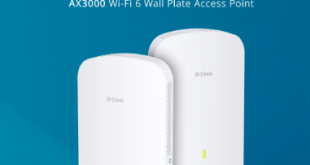According to new data from the International Data Corporation (IDC) Worldwide Quarterly Personal Computing Device Tracker, the India traditional PC market, which includes desktops, notebooks, and workstations, delivered another strong quarter (Apr-Jun 2022), shipping over 3.7 million units with a year-over-year (YoY) growth of 17.8 percent. The government segment performed well due to spillover orders from the previous quarter, but the other segments are slowing and channel inventory is increasing. While the notebook category continued to be the volume driver with 2.6 million units, its year-on-year growth rate fell to 7.3 percent from over 30 percent in the previous three quarters. The desktop category, on the other hand, maintained its strong performance, shipping more than one million units for the second consecutive quarter.
The demand for PCs was rather positive through April, but it slowed in the second half of the quarter, as the reopening of colleges got pushed to 3Q22. The enterprise segment grew by 14.9%, much lower than the previous three quarters as order materialization got delayed. Similarly, the SMB growth rate was lower than in the previous two quarters, and channel inventory increased considerably as demand tapered.
Bharath Shenoy, Senior Market Analyst, PC Devices, IDC India, said in a statement that online channels have been softening in recent quarters. While high footfall in offline channels contributed to a positive quarter for consumers, growth slowed as schools began to open, resulting in lower remote learning demand. Despite the fact that college openings have been pushed back to the third quarter this year, vendors are still hoping that back-to-college promotions will help revive consumer interest. Online sales are also expected to begin at the end of the third quarter of 22. High channel inventory, on the other hand, is cause for concern, and an inventory correction is unavoidable in the coming months.
Top 5 Company Highlights: 2Q22
HP Inc. shipped over 1.15 million units and continued to lead the overall PC market with a share of 30.8 percent in 2Q22. Its consumer share witnessed a marginal decline in share though it continued to lead the segment with a good margin. While government deals helped its commercial desktop performance, some backlogged enterprise orders helped it perform strongly in the commercial notebook category.
Dell Technologies maintained its second-place position behind HP, with a market share of 21.6 percent and 15.2 percent YoY growth in 2Q22. While it maintained its strong performance in the commercial segment, with a share of 27.1 percent, it did not fare as well in the consumer segment. The vendor dominated the enterprise notebook category with a 39.7 percent market share, owing to strong demand from its global accounts.
Lenovo maintained its third-place position behind Dell in 2Q22, with a 19.6 percent market share. The vendor grew by 38.8 percent year on year in the consumer segment but lost ground in the commercial segment due to delayed orders. The vendor continued to perform well in the SME segment, where it grew by 51.8 percent year on year and finished second to HP.
Acer Group has been losing ground, but it maintained fourth place in 2Q22 with an 8.9 percent market share. It performed well in the commercial desktop category, growing by 66.7 percent year on year. However, the vendor has struggled in the consumer segment, ranking sixth behind Apple with a meager 3.8 percent share.
ASUS maintained fifth place with a 6.1 percent share in 2Q22, growing by a healthy 53.3 percent year on year. For the second consecutive quarter, the offline expansion has helped the brand maintain momentum and grow by more than 50 percent YoY in the consumer segment. The vendor also has been doing great in the branded gaming category and is expected to maintain its momentum in the upcoming quarters.
Navkendar Singh, Associate Vice President, Devices Research, IDC India, South Asia & ANZ, said in a statement that Both the consumer and commercial segments are concerned about increased channel inventory and slowing demand. High inflation, recession fears, and currency fluctuations might slow PC purchases, particularly among startups. Large corporations are purchasing but deferring their purchases. Nonetheless, the upcoming online festivals may provide a ray of hope in the consumer segment, while the strong momentum in the government segment and the existing pipeline in the enterprise segment are reasons to be optimistic in the commercial segment.
 Latest Technology News Today – Get Latest Information Technology Updates and Services Latest Technology News Today – Get Latest Information Technology Updates and Services
Latest Technology News Today – Get Latest Information Technology Updates and Services Latest Technology News Today – Get Latest Information Technology Updates and Services 









